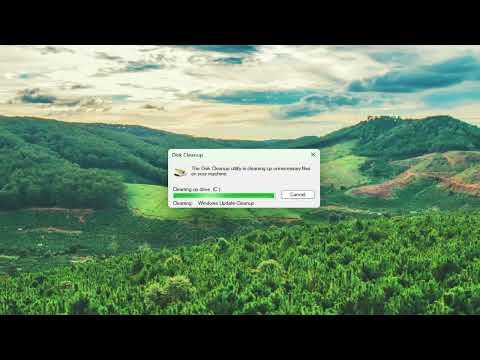I recently faced an issue with my Windows 11 computer where the C drive became full and started showing a red warning. The situation was quite stressful because I use my computer for work and personal projects, and running out of space can disrupt everything. After some research and trying a few solutions, I managed to resolve the issue effectively. Here’s a detailed account of how I tackled the problem.
Firstly, when I noticed that my C drive was showing red and was marked as full, I knew it was a serious issue. The red color typically indicates that the drive is almost out of space, and with modern applications and updates, this can lead to system instability and slow performance. My immediate reaction was to free up some space to prevent any potential problems.
I started by opening the Settings app and navigating to the “System” section, where I clicked on “Storage.” This area provides a comprehensive overview of how storage is being used on the C drive. I found that there were a few large categories consuming the most space, such as System files, Temporary files, and Apps & features.
The next step was to clean up temporary files. Windows 11 offers a built-in tool for this purpose. In the Storage settings, there was an option labeled “Temporary files.” Clicking on this revealed a list of temporary files, including system cache files, temporary setup files, and previous Windows installations. I checked all the boxes except the “Downloads” folder to ensure I didn’t accidentally delete important files. After selecting the files to delete, I clicked on “Remove files.” This action freed up a considerable amount of space on the C drive.
Next, I looked at the “Apps & features” section within the Storage settings. Here, I could see all the installed applications sorted by their size. I identified a few large applications and games that I hadn’t used in a while. Uninstalling these unused programs helped reclaim more space. To uninstall an application, I simply clicked on it and selected “Uninstall.” For some programs, I had to go through an additional uninstallation wizard.
Another method I used to free up space was to move personal files to an external drive. I had a significant amount of data, including photos, videos, and documents, that were stored on the C drive. To do this, I connected an external hard drive to my computer and began transferring large files. This step not only freed up space on the C drive but also provided a backup for my important data.
I also took advantage of OneDrive, Microsoft’s cloud storage service. I moved some of my less frequently accessed files to OneDrive. By enabling OneDrive’s “Files On-Demand” feature, I could keep files in the cloud without taking up space on my local drive. This feature allows you to see and access all your files in OneDrive without having to download them, saving precious space on the C drive.
In addition to these steps, I ran the Disk Cleanup utility. This tool is designed to help users free up disk space by removing unnecessary files. To access it, I searched for “Disk Cleanup” in the Start menu. After selecting the C drive, the utility scanned for files that could be safely removed. I checked options such as “System created Windows Error Reporting” and “Recycle Bin” and clicked “OK” to delete these files. The Disk Cleanup utility also provided an option to clean up system files, which I used to remove old Windows update files.
Finally, I decided to check for large files or folders manually. I used a third-party disk space analyzer tool to scan my C drive. These tools provide a visual representation of how space is used and help identify large files and folders that are taking up significant space. I found a few large files that I no longer needed and deleted them. These tools also helped me identify some redundant backups and duplicate files that I could remove.
After following all these steps, I noticed a significant improvement. My C drive no longer showed a red warning, and I had ample free space available. To prevent this issue from occurring in the future, I implemented a regular maintenance routine. I scheduled periodic cleanups and monitored my storage usage more closely. By keeping track of my disk space and managing files proactively, I aimed to avoid similar issues.
In conclusion, dealing with a full C drive can be a daunting task, but with a systematic approach, it’s manageable. By using built-in tools, removing unnecessary files, and leveraging cloud storage, I was able to resolve the problem effectively. The experience taught me the importance of regular maintenance and the benefits of staying organized with my files.
